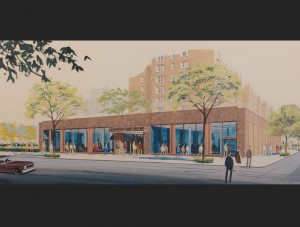A carved giltwood three-piece salon suite upholstered with Aubusson tapestry, French, circa 1880. Comprising of a settee and two chairs. Settee Height: 53″ Length: 77″. Gallery #39 & 63: F&P Associates/212.644.5885
Introduced earlier this year by The Metropolitan Museum of Art, #tapestrytuesday has proliferated across the particular corner of the internet devoted to old treasures and lost arts. As we’d be remiss if we tried to talk tapestries without talking about Aubusson tapestry, today we focus on this beautiful Aubusson piece. The gold standard of the art (and as of 2009, on UNESCO’s List of Intangible Cultural Heritage of Humanity), French Aubusson tapestry represents one of the great flowerings of the Renaissance arts.

Detail view; French Aubusson Salon Suite
The history of tapestries at large is as rich as it is long (The Met has an interesting summary on the topic). The first looms for Aubusson tapestry were set up in the town of Aubusson (located in the Creuse Valley, France) likely by Flemish refugees in the 1300s. Tapestry production, however, didn’t commence there until the 1600s. As the arts began to flourish once more in the Renaissance period, Aubusson makers based their designs on the prestigious Savonnerie rugs, which at the time were only available to the King.

Detail view; French Aubusson Salon Suite
In 1665, Aubusson was given the status of Royal Manufacture, athough anyone who could afford them (typically sophisticated aristocracy and the upper class) could buy them. The stunningly detailed Aubusson designs drew inspiration from verdure scenery, religious themes, animals, and beyond. The richly expressive tapestry featured here is rife with symbolic meaning as well as dramatic scenes that can be interpreted at length. After the French Revolution, machine-made tapestries began to replace thoughtful creations such as these, and just around the time this piece was made (1870-1880), tapestry production ceased in the town of Aubusson. While such works are replicated at length today, the intimate pleasures of original French Aubusson are hard to come by now.



